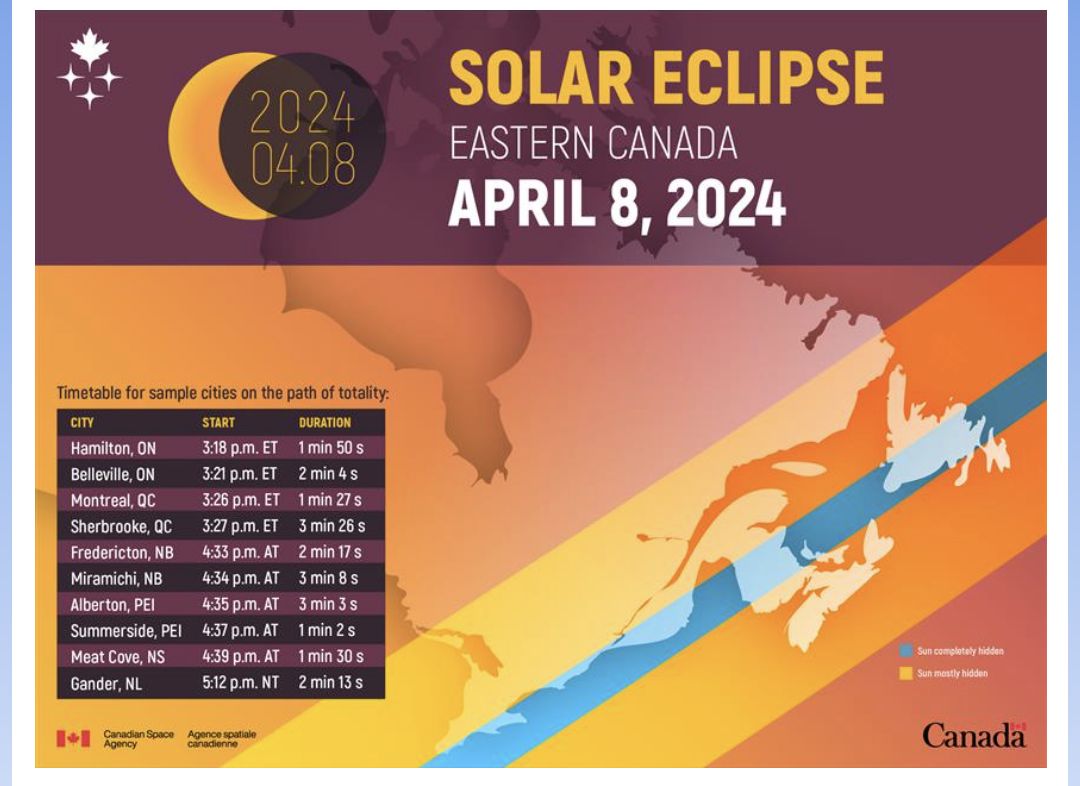**** Info via Environment Canada
Solar eclipse!
On Monday, April 8 a total solar eclipse will sweep across North America, tracing a path from Mexico through the United States, and into Canada.
The eclipse will enter our country through Southern Ontario at 3:18 p.m. EDT. It will follow a path through Quebec, New Brunswick, Prince Edward Island and Cape Breton before exiting continental North America on the Atlantic coast of Newfoundland at 5:16 p.m. NDT. You can check our astronomy website for clouds coverage updates in your area.

Very important!
Looking directly at the Sun during a solar eclipse, without appropriate protection, can lead to serious problems such as partial or complete loss of eyesight.
Types of solar eclipses
Solar eclipses are classified as either being total, in which the Moon completely covers the Sun, or annular, in which the Moon obscures all but an outer ring of the Sun. Areas within the path of totality will experience a few minutes of darkness, while areas outside will witness a partial solar eclipse with the Sun partially visible. The time and duration of the solar eclipse will vary depending on where you are.
How to watch the eclipse safely
To safely view a solar eclipse, never look directly at the sun without proper eye protection. Special eclipse glasses meeting ISO 12312-2 standards are essential to avoid eye damage. Homemade or regular sunglasses are not safe. Don’t have special glasses to watch the eclipse? The Canadian Space Agency provides instructions on its website for making your own solar-viewing projector. For more: your guide to solar eclipses.
If you’re within the eclipse path, stay updated on cloud coverage and viewing opportunities by following your region’s X (Twitter) weather account.



